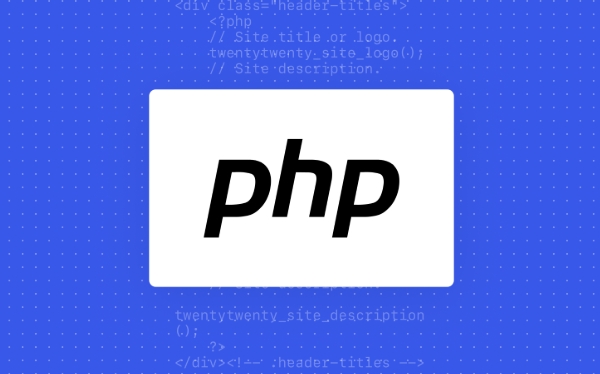 Backend Development
Backend Development
 PHP Tutorial
PHP Tutorial
 The Perils of Precision: Handling Floating-Point Numbers in PHP
The Perils of Precision: Handling Floating-Point Numbers in PHP
The Perils of Precision: Handling Floating-Point Numbers in PHP
Jul 26, 2025 am 09:41 AM0.1 0.2 !== 0.3 in PHP due to binary floating-point precision limitations, so developers must avoid direct comparisons and use epsilon-based checks, employ BCMath or GMP for exact arithmetic, store currency in integers when possible, format output carefully, and never rely on float precision for financial calculations.

When working with numbers in PHP, especially in financial or scientific calculations, developers often run into subtle but serious issues caused by floating-point precision. While PHP handles integers and strings predictably, floating-point arithmetic can produce results that seem wrong at first glance—like 0.1 0.2 !== 0.3. This isn't a bug in PHP; it's a consequence of how computers represent decimal numbers in binary.

Let’s break down the perils of floating-point precision in PHP and how to handle them properly.
Why Floating-Point Math Goes Wrong
Floating-point numbers in PHP (like in most programming languages) follow the IEEE 754 standard for binary representation. The problem arises because many decimal fractions cannot be represented exactly in binary.

For example:
var_dump(0.1 0.2); // float(0.30000000000000004) var_dump(0.1 0.2 == 0.3); // bool(false)
This happens because 0.1 and 0.2 are repeating fractions in binary, just like 1/3 is 0.333... in decimal. When stored in finite memory (64 bits for a double), they get rounded, leading to tiny inaccuracies.

These rounding errors accumulate and can cause:
- Incorrect comparisons
- Unexpected results in calculations
- Bugs in financial applications (e.g., incorrect totals)
Don’t Use Direct Equality Comparisons
One of the most common mistakes is comparing floating-point numbers with == or ===.
// ? Dangerous
if (0.1 0.2 == 0.3) {
echo "Equal"; // This won't execute
}Instead, use a tolerance (epsilon) to check if two floats are "close enough":
// ? Safe comparison
function floatsEqual($a, $b, $epsilon = 0.00001) {
return abs($a - $b) < $epsilon;
}
if (floatsEqual(0.1 0.2, 0.3)) {
echo "Effectively equal"; // This will execute
}Choose $epsilon based on your application’s required precision. For money, 0.0001 is often sufficient.
Use BCMath or GMP for Exact Arithmetic
When precision is critical—like in financial calculations—avoid floating-point numbers entirely. PHP provides BCMath and GMP extensions for arbitrary precision arithmetic.
BCMath: Arbitrary Precision Decimal Math
BCMath works with numbers as strings and supports addition, subtraction, multiplication, division, etc., with exact precision.
// Example: 0.1 0.2 = 0.3, exactly
$result = bcadd('0.1', '0.2', 1); // '0.3'Note: All operands must be strings, and you specify the scale (number of decimal places).
More examples:
echo bcmul('0.1', '0.2', 2); // '0.02'
echo bcdiv('1.0', '3.0', 5); // '0.33333'BCMath is ideal for:
- Currency calculations
- Tax, interest, or invoice totals
- Any situation where rounding errors are unacceptable
GMP: Integer-Based High-Precision Math
GMP is more efficient for large integers but works best when you can scale values (e.g., store cents instead of dollars).
$amount1 = gmp_init(10); // 10 cents $amount2 = gmp_init(20); // 20 cents $total = gmp_add($amount1, $amount2); // 30 cents echo gmp_strval($total); // "30"
This avoids decimals entirely—common in payment systems.
Formatting and Display Issues
Even if internal calculations are correct, displaying floats can mislead:
echo 0.29 * 100; // Might show 28.999999999999996
Use number_format() or printf() to control output:
echo number_format(0.29 * 100, 2); // "29.00"
But remember: formatting only affects display, not the underlying value.
Best Practices Summary
To avoid floating-point pitfalls in PHP:
- ? Never compare floats directly—use an epsilon.
- ? Use BCMath for financial or high-precision decimal math.
- ? Store currency in cents (integers) when possible.
- ? Validate and round input values intentionally.
- ? Be cautious with type juggling—PHP might silently convert strings to floats.
Example of safe money handling:
// Add two amounts in cents using BCMath
function addMoney($a, $b) {
return bcadd($a, $b, 0); // No decimal places for cents
}
$totalCents = addMoney('150', '250'); // '400' cents = $4.00Floating-point numbers are useful for scientific or approximate calculations, but they’re a poor fit for exact arithmetic. In PHP, the key is knowing when to step outside the default float behavior and use tools like BCMath to preserve accuracy.
Basically: if precision matters, don’t trust the decimal point—take control of it.
The above is the detailed content of The Perils of Precision: Handling Floating-Point Numbers in PHP. For more information, please follow other related articles on the PHP Chinese website!

Hot AI Tools

Undress AI Tool
Undress images for free

Undresser.AI Undress
AI-powered app for creating realistic nude photos

AI Clothes Remover
Online AI tool for removing clothes from photos.

Clothoff.io
AI clothes remover

Video Face Swap
Swap faces in any video effortlessly with our completely free AI face swap tool!

Hot Article

Hot Tools

Notepad++7.3.1
Easy-to-use and free code editor

SublimeText3 Chinese version
Chinese version, very easy to use

Zend Studio 13.0.1
Powerful PHP integrated development environment

Dreamweaver CS6
Visual web development tools

SublimeText3 Mac version
God-level code editing software (SublimeText3)
 Modernizing Your Codebase with PHP 8's Union Types
Jul 27, 2025 am 04:33 AM
Modernizing Your Codebase with PHP 8's Union Types
Jul 27, 2025 am 04:33 AM
UpgradePHP7.xcodebasestoPHP8 byreplacingPHPDoc-suggestedtypeslike@paramstring|intwithnativeuniontypessuchasstring|intforparametersandreturntypes,whichimprovestypesafetyandclarity;2.Applyuniontypestomixedinputparameters(e.g.,int|stringforIDs),nullable
 The Duality of PHP: Navigating Loose Typing vs. Strict Type Declarations
Jul 26, 2025 am 09:42 AM
The Duality of PHP: Navigating Loose Typing vs. Strict Type Declarations
Jul 26, 2025 am 09:42 AM
PHP supports the coexistence of loose types and strict types, which is the core feature of its evolution from scripting languages to modern programming languages. 1. Loose types are suitable for rapid prototyping, handling dynamic user input, or docking with external APIs, but there are problems such as risk of implicit type conversion, difficulty in debugging and weak tool support. 2. Strict type is enabled by declare(strict_types=1), which can detect errors in advance, improve code readability and IDE support, and is suitable for scenarios with high requirements for core business logic, team collaboration and data integrity. 3. Mixed use should be used in actual development: Strict types are enabled by default, loose types are used only when necessary at the input boundaries, and verification and type conversion are performed as soon as possible. 4. Recommended practices include using PHPSta
 PHP 8.1 Enums: A New Paradigm for Type-Safe Constants
Jul 28, 2025 am 04:43 AM
PHP 8.1 Enums: A New Paradigm for Type-Safe Constants
Jul 28, 2025 am 04:43 AM
Enums introduced in PHP8.1 provides a type-safe constant collection, solving the magic value problem; 1. Use enum to define fixed constants, such as Status::Draft, to ensure that only predefined values are available; 2. Bind enums to strings or integers through BackedEnums, and support conversion from() and tryFrom() between scalars and enums; 3. Enums can define methods and behaviors, such as color() and isEditable(), to enhance business logic encapsulation; 4. Applicable to static scenarios such as state and configuration, not for dynamic data; 5. It can implement the UnitEnum or BackedEnum interface for type constraints, improve code robustness and IDE support, and is
 Understanding the `callable` Pseudo-Type and Its Implementation
Jul 27, 2025 am 04:29 AM
Understanding the `callable` Pseudo-Type and Its Implementation
Jul 27, 2025 am 04:29 AM
AcallableinPHPisapseudo-typerepresentinganyvaluethatcanbeinvokedusingthe()operator,usedprimarilyforflexiblecodeincallbacksandhigher-orderfunctions;themainformsofcallablesare:1)namedfunctionslike'strlen',2)anonymousfunctions(closures),3)objectmethodsv
 The Perils of Precision: Handling Floating-Point Numbers in PHP
Jul 26, 2025 am 09:41 AM
The Perils of Precision: Handling Floating-Point Numbers in PHP
Jul 26, 2025 am 09:41 AM
0.1 0.2!==0.3inPHPduetobinaryfloating-pointprecisionlimitations,sodevelopersmustavoiddirectcomparisonsanduseepsilon-basedchecks,employBCMathorGMPforexactarithmetic,storecurrencyinintegerswhenpossible,formatoutputcarefully,andneverrelyonfloatprecision
 Unraveling PHP's Type Juggling: A Guide to `==` vs. `===`
Jul 28, 2025 am 04:40 AM
Unraveling PHP's Type Juggling: A Guide to `==` vs. `===`
Jul 28, 2025 am 04:40 AM
==performsloosecomparisonwithtypejuggling,===checksbothvalueandtypestrictly;1."php"==0istruebecausenon-numericstringsconvertto0,2.emptystrings,null,false,and0arelooselyequal,3.scientificnotationlike"0e123"=="0e456"cancau
 The Life of a Variable: PHP's Internal `zval` Structure Explained
Jul 27, 2025 am 03:47 AM
The Life of a Variable: PHP's Internal `zval` Structure Explained
Jul 27, 2025 am 03:47 AM
PHP uses zval structure to manage variables. The answer is: 1. zval contains values, types and metadata, with a size of 16 bytes; 2. When the type changes, only the union and type information need to be updated; 3. Complex types refer to structures with reference counts through pointers; 4. When assigning values, copy is used to optimize memory; 5. References make variables share the same zval; 6. Recycling references are processed by a special garbage collector. This explains the underlying mechanism of PHP variable behavior.
 Resource Management in PHP: The Lifecycle of a `resource` Type
Jul 27, 2025 am 04:30 AM
Resource Management in PHP: The Lifecycle of a `resource` Type
Jul 27, 2025 am 04:30 AM
The life cycle of PHP resources is divided into three stages: 1. Resource creation, obtaining external system handles through functions such as fopen and curl_init; 2. Resource usage, passing resources to related functions for operation, PHP maps to the underlying system structure through resource ID; 3. Resource destruction, manually calling fclose, curl_close and other functions should be given priority to release resources to avoid relying on automatic garbage collection to prevent file descriptors from exhausting. Best practices include: always explicitly close resources, use try... finally ensure cleanup, prioritize objects such as PDO that supports __destruct, avoid global storage resources, and monitor active resources through get_resources()





